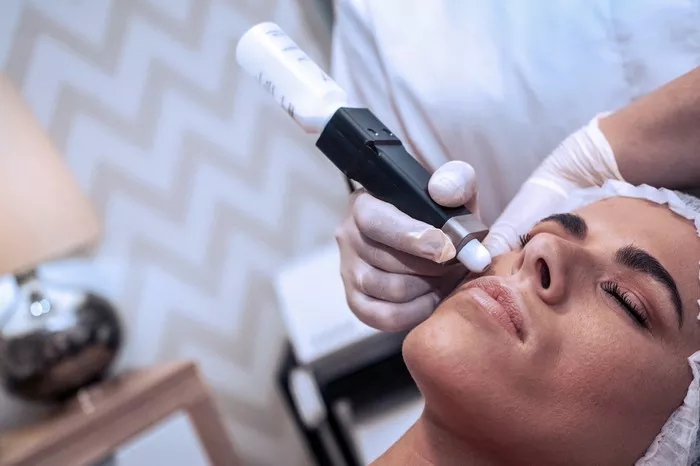Dermabrasion is a popular cosmetic procedure designed to improve the texture and appearance of the skin. It involves the controlled removal of the outermost layer of skin, revealing a smoother, more youthful complexion. If you’re considering dermabrasion, you may wonder how often you should undergo this treatment for optimal results. In this article, we will explore the frequency of dermabrasion, taking into account various factors that can influence the recommended treatment intervals.
What is Dermabrasion?
Before diving into the frequency of dermabrasion treatments, let’s briefly recap what the procedure entails. Dermabrasion is a skin resurfacing technique that utilizes a specialized instrument to exfoliate the skin’s outer layer. This process stimulates cell turnover, promotes collagen production, and helps reduce the appearance of skin imperfections such as acne scars, fine lines, and pigmentation irregularities.
Dermabrasion can be performed on various areas of the body, including the face, neck, hands, and other body parts where skin rejuvenation is desired. The procedure is typically carried out by a dermatologist or a trained skincare professional in a clinical setting.
Factors Influencing the Frequency of Dermabrasion
The frequency of dermabrasion treatments can vary depending on several factors, including:
Skin Condition: The severity of your skin concerns and the desired level of improvement play a role in determining the treatment frequency. Individuals with more pronounced or extensive skin issues may require multiple sessions spaced apart.
Treatment Goals: The specific goals you have for your skin will also impact the frequency of dermabrasion. Some individuals may be satisfied with a single treatment to address minor imperfections, while others may seek a more comprehensive skin rejuvenation program involving multiple sessions.
Recovery Time: Dermabrasion involves a recovery period during which the skin heals and regenerates. The duration of this recovery period can vary depending on the depth of the treatment and your skin’s individual healing capabilities. It is essential to allow sufficient time between treatments to ensure proper healing and minimize the risk of complications.
Skin Sensitivity: Each individual’s skin has a unique level of sensitivity and tolerance to dermabrasion. Some individuals may experience more prolonged redness, swelling, or discomfort after the procedure, requiring longer intervals between treatments to allow the skin to fully recover.
Combination Treatments: Dermabrasion is often combined with other aesthetic procedures to achieve comprehensive results. The inclusion of complementary treatments, such as chemical peels, microdermabrasion, or laser resurfacing, may influence the frequency of dermabrasion sessions.
Professional Recommendation: Consulting with a qualified dermatologist or skincare professional is crucial in determining the ideal frequency of dermabrasion treatments for your specific needs. They will evaluate your skin condition, discuss your goals, and provide personalized recommendations based on their expertise and experience.
Recommended Frequency of Dermabrasion Treatments
While the exact frequency of dermabrasion treatments can vary, it is generally recommended to space sessions several weeks to months apart. This timeframe allows for adequate healing and regeneration of the skin between treatments. The following guidelines can serve as a general reference:
Superficial Dermabrasion: Superficial dermabrasion treatments, which target mild skin concerns and require minimal downtime, may be performed more frequently. It is common to have sessions scheduled every two to four weeks until the desired results are achieved.
Medium to Deep Dermabrasion: Medium to deep dermabrasion treatments, which involve more intensive exfoliation and require longer recovery periods, are typically spaced further apart. Depending on individual factors, treatments may be scheduled every four to six weeks or even several months apart.
It is important to note that these are general recommendations, and the frequency of dermabrasion treatments should always be determined on an individual basis. Your skincare professional will assess your specific needs, monitor your progress, and adjust the treatment intervals accordingly.
Post-Treatment Skincare and Maintenance
To maintain the results of dermabrasion treatments and support skin health, it is essential to follow a diligent skincare routine and practice proper sun protection. This may include:
Moisturizing: Use a gentle, hydrating moisturizer to keep the skin well-nourished and moisturized. Opt for products with soothing ingredients to help calm and restore the skin after dermabrasion.
Sun Protection: Protect your skin from harmful UV rays by applying a broad-spectrum sunscreen with at least SPF 30 daily. Sunscreen should be reapplied every two hours, especially if you’re exposed to direct sunlight.
Avoiding Harsh Products: Refrain from using harsh skincare products or exfoliants immediately after dermabrasion, as they can irritate the skin. Follow your skincare professional’s instructions regarding product usage and when it is safe to reintroduce active ingredients.
Regular Maintenance Treatments: After achieving the desired results from initial dermabrasion treatments, you may benefit from occasional maintenance sessions to sustain the improvements and address any new concerns that arise.
Conclusion
Dermabrasion is an effective treatment for improving skin texture, reducing imperfections, and achieving a rejuvenated appearance. The frequency of dermabrasion treatments will vary depending on individual factors such as skin condition, treatment goals, recovery time, and professional recommendations. It is important to consult with a qualified skincare professional who can assess your needs and guide you on the appropriate treatment intervals. By following a personalized treatment plan and practicing proper post-treatment skincare, you can maintain the benefits of dermabrasion and enjoy a healthier, more radiant complexion.


